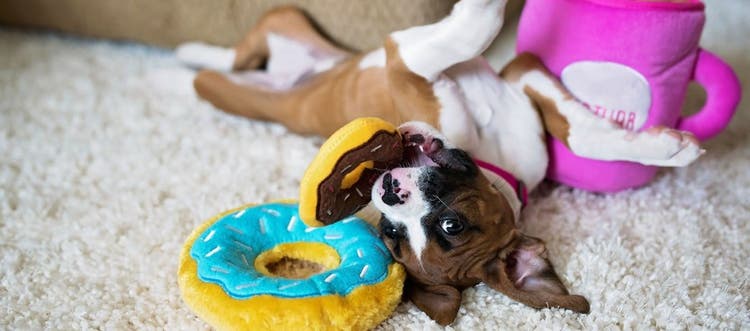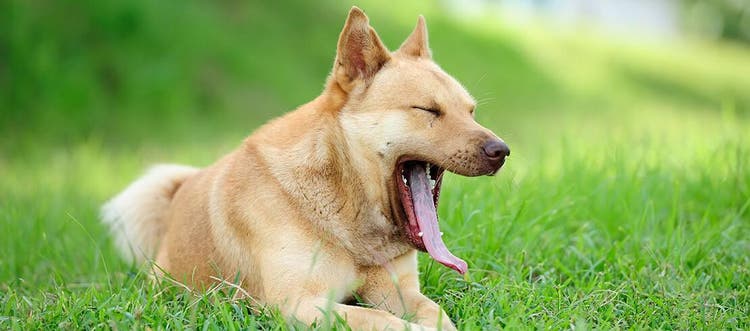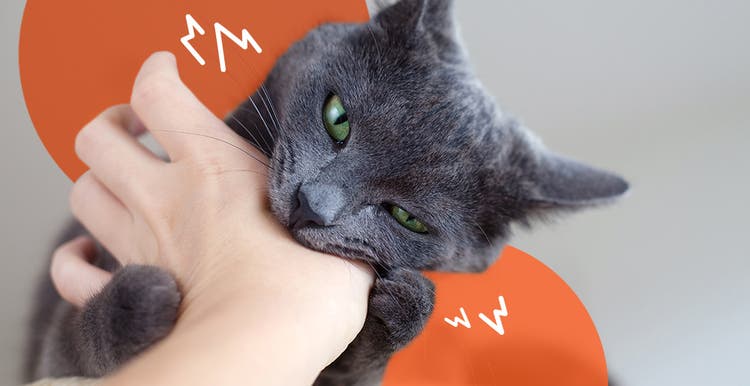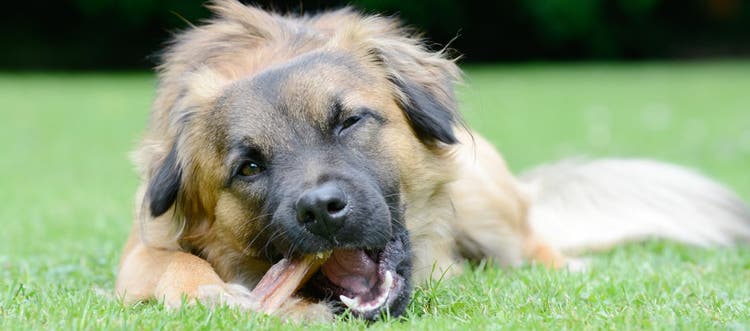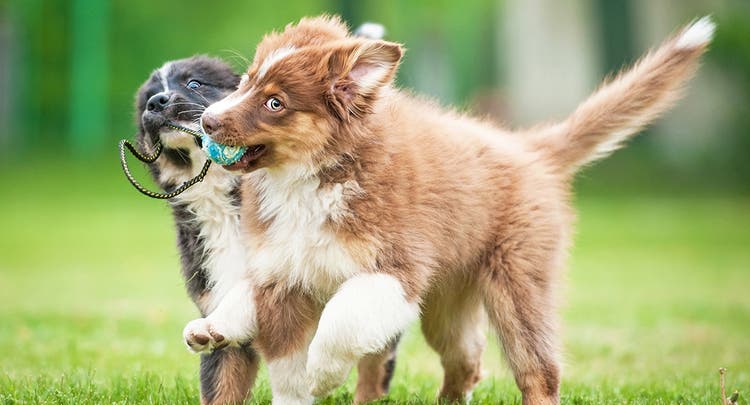Learn why your dog might be biting you.
Receiving a painful nip or bite from your dog can be an unpleasant experience — and may even cause an owner to worry about their pup’s temperament. Even the friendliest dog is capable of nipping or snapping, and dogs don’t always bite out of aggression or fear. Finding out why your dog may be biting can help you get to the root of the behavior and, with a little work, can discourage your dog from biting altogether.
Reasons Dogs May Bite
Dogs may bite or nip for a variety of reasons:
- They weren’t properly socialized as puppies: Puppies often learn the boundaries between playful nipping and painful bites from their mother and littermates. If a puppy bites too hard, the mother might growl or another puppy may issue a high-pitched yelp. If your dog didn’t spend enough time with their mother and litter before being adopted or wasn’t taught not to bite at an early age, they may not know the difference between a gentle nip and a harder bite.
- They mouth or nip during play, or out of excitement or impatience: Some dogs may mouth your hand or nip at your heels while playing with you, especially when they’re excited or being chased. Herding breeds and those with a higher prey drive may also nip or bite as a natural instinct.
- They bite out of aggression or fear: It’s not always easy to know the difference between play biting and an aggressive bite, but body language can help indicate which is which. If your dog bites out of aggression, they may wrinkle their muzzle, seem tense or nervous, expose their teeth or curl back their lips. Aggressive bites are often more painful than play bites.
How to Stop a Dog from Biting or Nipping
The following steps will help you teach your dog to stop nipping, biting or mouthing. Just make sure to stick with the training and be consistent so your dog doesn’t get mixed messages.
Step 1: Be Vocal
Play with your dog as you normally do. When your dog gives you a bite or nip that crosses the line, yell “Ouch!” or give a high-pitched yelp. Then pull your hand away and stop playing for 30 seconds or so. Repeat this process every time your dog nips too hard.
After doing this three to five times within a play session, you might want to switch to a different activity so your dog doesn’t start to confuse your reaction with a reprimand.
Step 2: Teach Patience
If your dog accidentally nips you out of impatience or excitement when you’re giving them a treat or a piece of food, try this: Show your dog the treat, and then put it in your fist and let them smell it. Your dog will likely nuzzle your hand, but don’t open it for five to 10 seconds. Then say your dog’s name, open your hand with your palm facing up and let them take the treat out of your hand. Do this consistently to teach your dog patience and gentleness at the same time.
Step 3: Give a Timeout
Just like with children, a timeout can be an effective way to teach your dog a lesson. If your dog keeps nipping too hard — even after you yelp in response — give them a short timeout. Leave them in a pet-safe room or in their crate for about 30 seconds to a minute. After a few timeouts, your pet should start to get the message.
Step 4: Change Your Play Style
While you might enjoy roughhousing with your dog, your playtime together is one way your dog internalizes your love and affection. Rather than use your hands to roughhouse with your dog, start using durable chew toys. If you notice your dog getting close to nipping, engage them in fetch or a game of tug of war to redirect their energy.
Step 5: Un-herd the Instinct
If your dog has a herding instinct or high prey drive, they might nip at your ankles or chase your feet as you walk by. Although this behavior typically isn’t aggressive, it can still be painful. To help put a stop to it:
- Carry a small chew toy around with you.
- If your dog nips your ankles, come to a full stop.
- Show your dog the toy and get their attention.
- Get them to grab the toy, take a few steps, let go of the toy and keep moving.
Over time, this process should help your dog channel their herding tendencies into the chew toy rather than your legs.
Step 6: Seek Help for Aggressive Biting
Sometimes, dogs do bite out of aggression or fear. If you find that these training tips aren’t curbing or reducing the behavior, seek help from a veterinarian or professional dog trainer — they’ll be able to provide additional suggestions, training and guidance.
As with all dog training, discouraging your dog from biting or nipping you is a process that requires consistency and patience. If you stick with the training, you’ll hopefully see your dog nipping, biting and mouthing less and less, until they stop altogether.
References
- American Society for the Prevention of Cruelty to Animals. (n.d.). Mouthing, Nipping and Play Biting in Adult Dogs. Retrieved from https://www.aspca.org/pet-care/dog-care/common-dog-behavior-issues/mouthing-nipping-and-play-biting-adult-dogs
- American Veterinary Medical Foundation. (n.d.). Why Do Dogs Bite? Retrieved from https://www.avma.org/resources/pet-owners/why-do-dogs-bite
